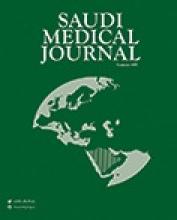Abstract
OBJECTIVE: To further understand the pathogenesis of pneumococcal meningitis, and provide some target candidates for the development of drugs.
METHODS: This study was performed at the Department of Laboratory Medicine, Key Laboratory of Diagnostic Medicine (Ministry of Education), Chongqing Medical University, Chongqing, China from March 2006 to December 2007. A promoter-trap library of Streptococcus pneumoniae TIGR4, reported by green fluorescent protein was constructed, and used to infect BALB/c mice (n=15) intranasally, to set up a meningitis model. The control group (n=5) were inoculated with sterile phosphate buffered saline. The bacteria containing the promoter fusions induced only in meningitis brain tissue, not in vitro were screened by differential fluorescence induction. The obtained bacteria were prepared to re-infect the mice and re-screened, as above. The sorted bacteria were spread on trypticase soy agar with 5% sheep blood agar plates containing chloramphenicol (2.5 µg/mL), and were used for DNA cloning, sequencing, and bioinformatics analysis.
RESULTS: A total of 52 genes were obtained. Bioinformatics analysis revealed that these in vivo induced genes were involved in functions such as, adherence, energy metabolism, nutrient substance transport, transcription regulation, DNA metabolism, as well as, cell wall synthesis. In addition, there were some genes encoding for some hypothetical proteins with unknown, or putative functions.
CONCLUSION: Pneumococcal genes involved in meningitis identified in this study are potential targets to understand the pathogenesis of pneumococcal meningitis.
- Copyright: © Saudi Medical Journal
This is an open-access article distributed under the terms of the Creative Commons Attribution-Noncommercial License (CC BY-NC), which permits unrestricted use, distribution, and reproduction in any medium, provided the original work is properly cited.






